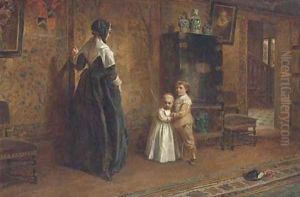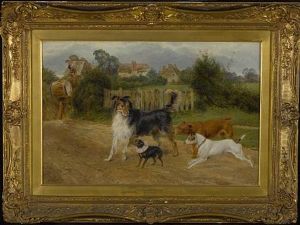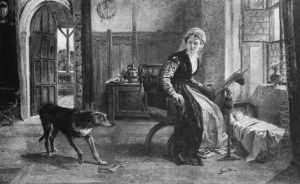Alfred W. Cooper Paintings
Alfred William Cooper was an English artist known primarily for his watercolor paintings. Born in 1838, Cooper's artistic journey began in the Victorian era, a period that witnessed the flourishing of British watercolor painting. Despite the lack of extensive documentation on his early life, it is evident that Cooper dedicated himself to mastering the nuances of watercolor, contributing to the medium's prestige and popularity in England.
Cooper's work predominantly features landscapes and rural scenes, capturing the serene beauty of the English countryside with a delicate and meticulous approach. His ability to depict the soft, diffused light of England's skies and the intricate textures of foliage and architecture won him admiration among his contemporaries. Unlike the grand historical or mythological themes favored by many artists of his time, Cooper's subjects were often understated, focusing on the tranquility of everyday scenes. This choice reflects the broader Victorian fascination with nature and the idyllic pastoral life, seen as a refuge from the era's rapid urbanization and industrialization.
Throughout his career, Alfred W. Cooper exhibited his works at various prestigious venues, including the Royal Academy and the Royal Watercolour Society. These exhibitions were crucial for artists of the period to gain recognition and sell their works. Cooper's paintings, characterized by their refined detail and subtle color palettes, appealed to the Victorian taste for sentimentality and meticulous craftsmanship.
Despite his contributions to the art of watercolor painting, Alfred W. Cooper remains a relatively obscure figure in art history. His death in 1929 marked the end of a career that spanned over half a century, a period during which the art world saw significant transformations. Today, Cooper's works are held in private collections and occasionally appear in auctions, where they are appreciated for their technical skill and serene beauty. His legacy, while not as widely recognized as some of his contemporaries, offers valuable insights into the evolution of watercolor painting in England and the aesthetic values of the Victorian era.




